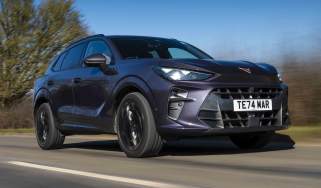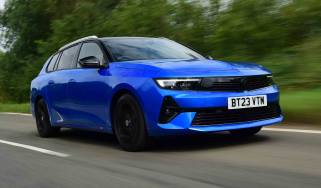Electric van guide: can an EV van work for your business?
There's more choice than ever in the electric van market. With improved range and charging options available, more businesses will be able to make the switch
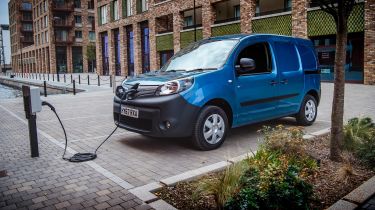
The UK van market is a prime category for the switch to electric vehicles. As businesses look to save on fuel costs and cut their carbon footprint, and with increasing emission restrictions such as the London Ultra Low Emission Zone (ULEZ), many business owners are now looking at the possibility of buying or leasing an electric van.
Several of the established van makers, including Mercedes, Nissan, Renault, Stellantis and Volkswagen, now offer at least one electric option. There are also some new entries to the UK van market, such as Maxus, meaning there is now more choice than ever for businesses and sole traders who are looking to switch to electric.
There are also the options of plug-in hybrid and range-extender models such as those offered by Ford and LEVC. These vans offer a low-emissions alternative for buyers who need more driving range than a purely electric commercial vehicle can offer.
Businesses are always looking for ways to reduce overheads, and while the initial cost of an electric van is high when compared to an equivalent diesel van, there are major savings to be made in everyday running costs. As a result, most electric van makers are keen to focus on the total cost of ownership (TCO) to help focus on the benefits of electrification.
For the moment, the main focus of most electric vans is the so-called 'last-mile' delivery sector, because they still don't have quite the same driving range as a diesel van. There has been a huge surge in last-mile deliveries due to more people shopping from home. An electric van is a suitable fit for this kind of courier work because it often entails multiple stops on short, urban routes, sometimes in low- or zero-emissions zones. If you’re in an electric van, then you don't need to worry about any emissions-based charges.
On this page you'll find the advantages and disadvantages of running an electric van, including some factors you may not have considered, to help you make the decision whether an electric van is right for you and your business.
Battery range
The biggest deciding factor on whether an electric van is right for you will be battery range. If an electric van can't cover the miles you do in a day on a single charge, then it's unlikely to be suitable. The majority of electric vans have a quoted range in the region of 100-220 miles, and while some vans can achieve more than 200 miles, cold weather can cause range to drop to as little as 50 miles on some other models. Manufacturers have conducted studies into van use as part of their electric van development, with some reporting that the average van driver covers about 70 miles per day, so in theory most electric vans should have range to spare.
Our best advice is to keep a record of the number of miles you do in a day. If it's less than 100 miles, then you might want to consider an electric van.
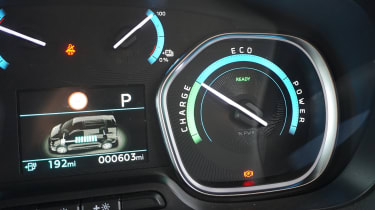
You needn’t make any sacrifice in regards to driver comfort, either. Many electric vans can be ordered with the facility to pre-heat the cabin while it's still plugged in, which saves the battery charge for driving. Extras such as heated seats are available, too.
Of course, long-distance travel is out of the question unless you know there are going to be charging facilities either at your destination or en-route, and if you have enough time in your schedule to factor in the time it takes to recharge your van. However, there are alternatives to be had here. Ford offers its Transit Custom as a plug-in hybrid that gives up to 27 miles of EV range, but can cover 300 miles when you factor in the petrol engine. LEVC has also introduced its VN5 range-extending van, which is based on the TX taxi. This has a bigger battery for a longer EV range, but the engine is a generator that can supply power to the electric motor when the battery is flat. So while these vehicles still require the use of combustion, their fuel-consumption is significantly lower than that of a traditional engine.
Charging
The other big factor in buying an electric van is whether you have the ability to charge it up. The ideal situation would be to have a parking spot with access to a charging point.
The best way to charge a van is by using a wall box, because this delivers a faster charge than if you plug into a conventional domestic plug socket – some vans don't even offer the latter as an option, but you will be offered a wallbox installation when you buy the van. If you leave your van parked up overnight, you can plug it in and have a fully charged van ready to go in the morning - on the most advanced electric vans you can also set the cabin temperature for the start of the day, so battery energy is saved for driving.
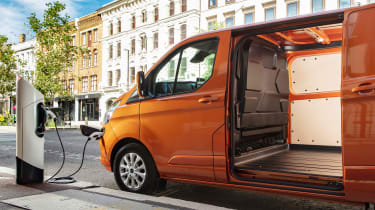
Public rapid charging points are on the continuous rise in the UK, although not all vans can take advantage of this. The charging speed of your van will be limited to the type of charger that's fitted to it, and if it's a low-capacity system, then charging from a high-voltage supply is out of the question. Still, fast chargers are becoming increasingly common at locations such as dealerships, motorway service stations and some commercial sites such as supermarkets. With the right charging system in your van, these can deliver up to an 80 per cent charge in half an hour.
If you're going to be relying on a charging point at home or on business premises, then these can recharge the batteries in 4-8 hours, depending on how powerful the wallbox is. In the worst case, a completely flat battery can be recharged from a conventional three-pin plug socket in around 12 hours. If you do take the plunge, you'll soon get in the habit of plugging your van in overnight to keep the battery topped up, just like a mobile phone or power tools.
Load carrying
Adding weight to any van has a negative effect on how much of a payload it can carry, whether it's powered by a diesel engine or an electric motor. A heavy battery does have a negative impact on payload weights, but with technology still progressing, electric van payloads continue to edge ever closer to their diesel counterparts.
Most electric vans offer a cargo volume that matches the diesel version, because the compact electric motor and gearbox goes where the engine would normally sit, while the batteries tend to go in the void left by a manual gearbox, as well as under the cargo area. The reason we've seen so many large electric vans launched in recent years is that manufacturers want to offer maximum cargo volume for last-mile deliveries, which are usually made up of numerous small parcels that don't weigh very much.
The big minus point for an electric van is the reduction in range that the extra weight will cause. You'll need more power to get moving, so the van's range will be shortened, once again making the case that an electric van is better suited to short trips rather than longer drives.
Price
While pricing for electric vans is currently higher than for diesel-powered models, the Government's Plug-in Van Grant is bigger than it is for electric cars. You can get up to 35% off the purchase price of a van that emits less than 50g/km of CO2 and can travel at least 60 miles on pure-electric power.
Small vans qualify for up to £2,500 per vehicle, while large vans qualify for up to £5,000. A business can claim grants on up to 1,000 vans and trucks per year, with the limit resetting on the first day of April each year. Details on which models qualify for the grant can be found on the gov.uk website.
Running costs
Another factor to consider is the overall running costs of an electric van. While you'll never be at the mercy of fuel station prices, you won't be accessing free energy. As a rough estimate, you'd need to spend around £15 on diesel to cover 100 miles, whereas you will probably only need to spend around only £5 to fully-charge a battery (depending on your home or business’s electricity tariff) so the savings an electric van can deliver are plain to see. If you're registered as a company, you should also be able to write off some of your household energy bills against VAT, because the energy used to recharge your electric van is a legitimate business cost.
Servicing should be relatively cheap for an electric van. Since there is no engine to maintain, there are fewer parts to inspect and replace on an annual basis. Manufacturers offer maintenance plans to suit the number of miles you cover in a year, too.
Recent developments in terms of zero- or low-emissions zones appearing in city centres mean that electric vans are becoming even more desirable. Where once depreciation was heavy when compared with a diesel van’s, it's becoming less of an issue for buyers needing a non-polluting way of making deliveries.
Decided to make the switch? Then check out our list of the best electric vans.
Find a car with the experts




